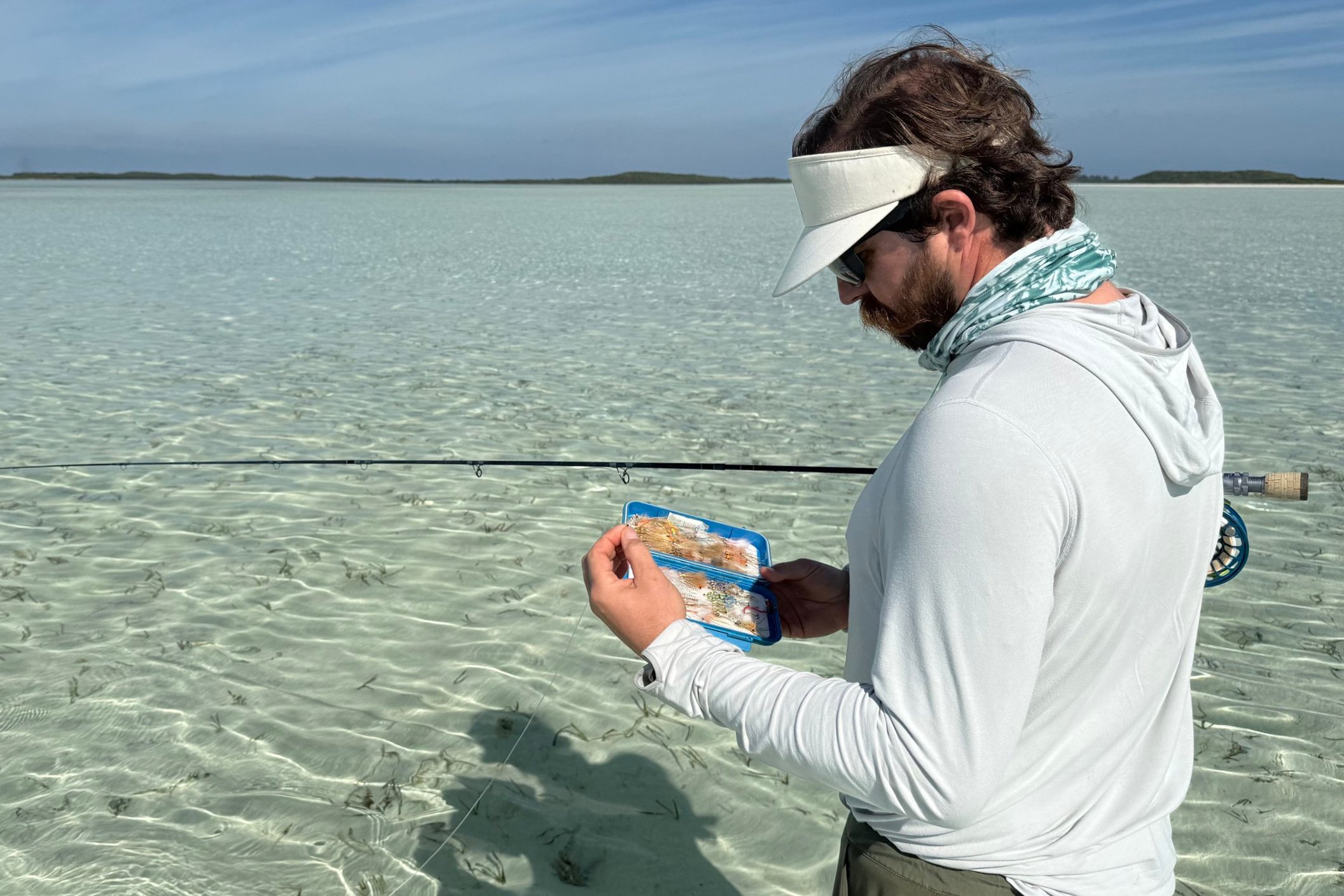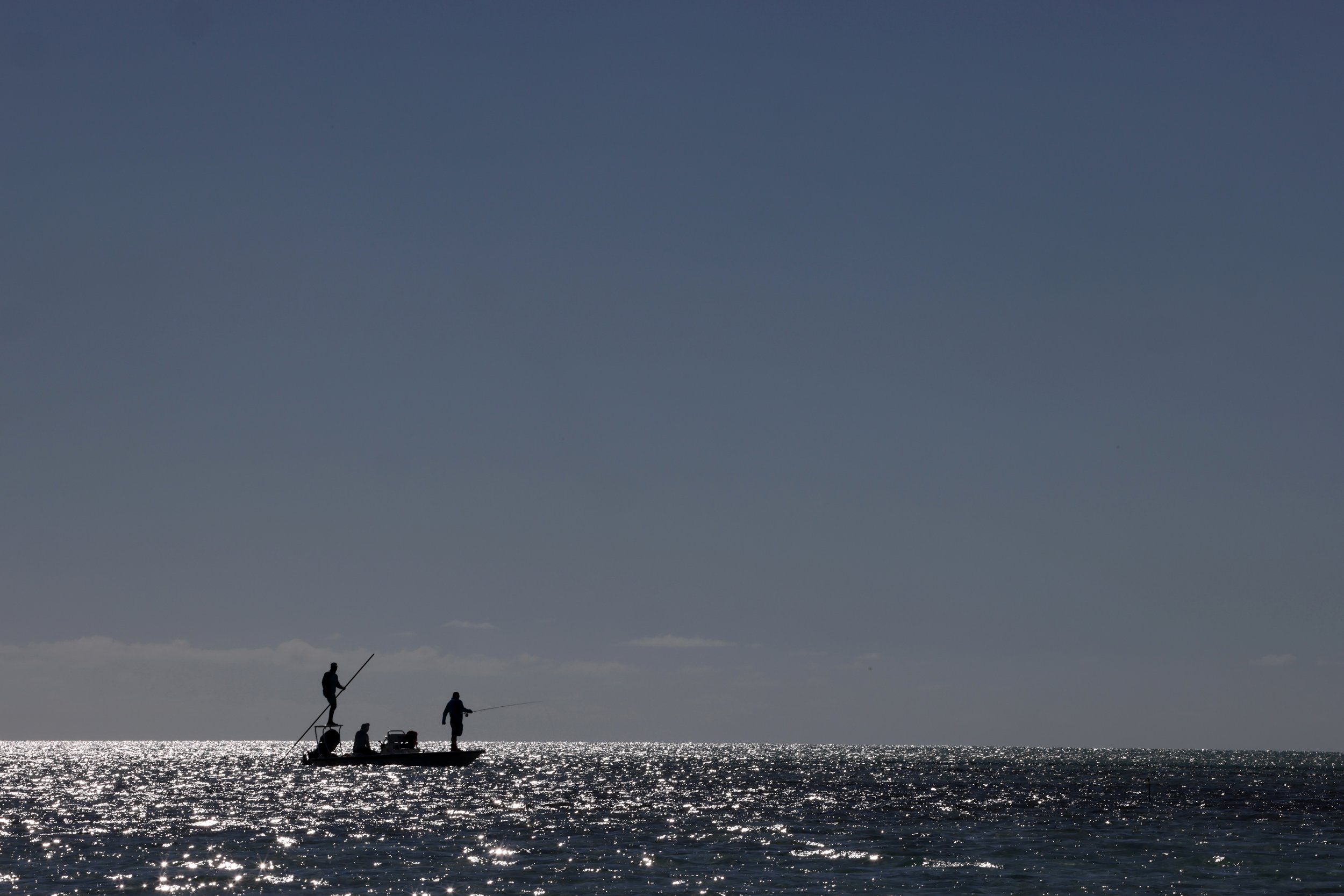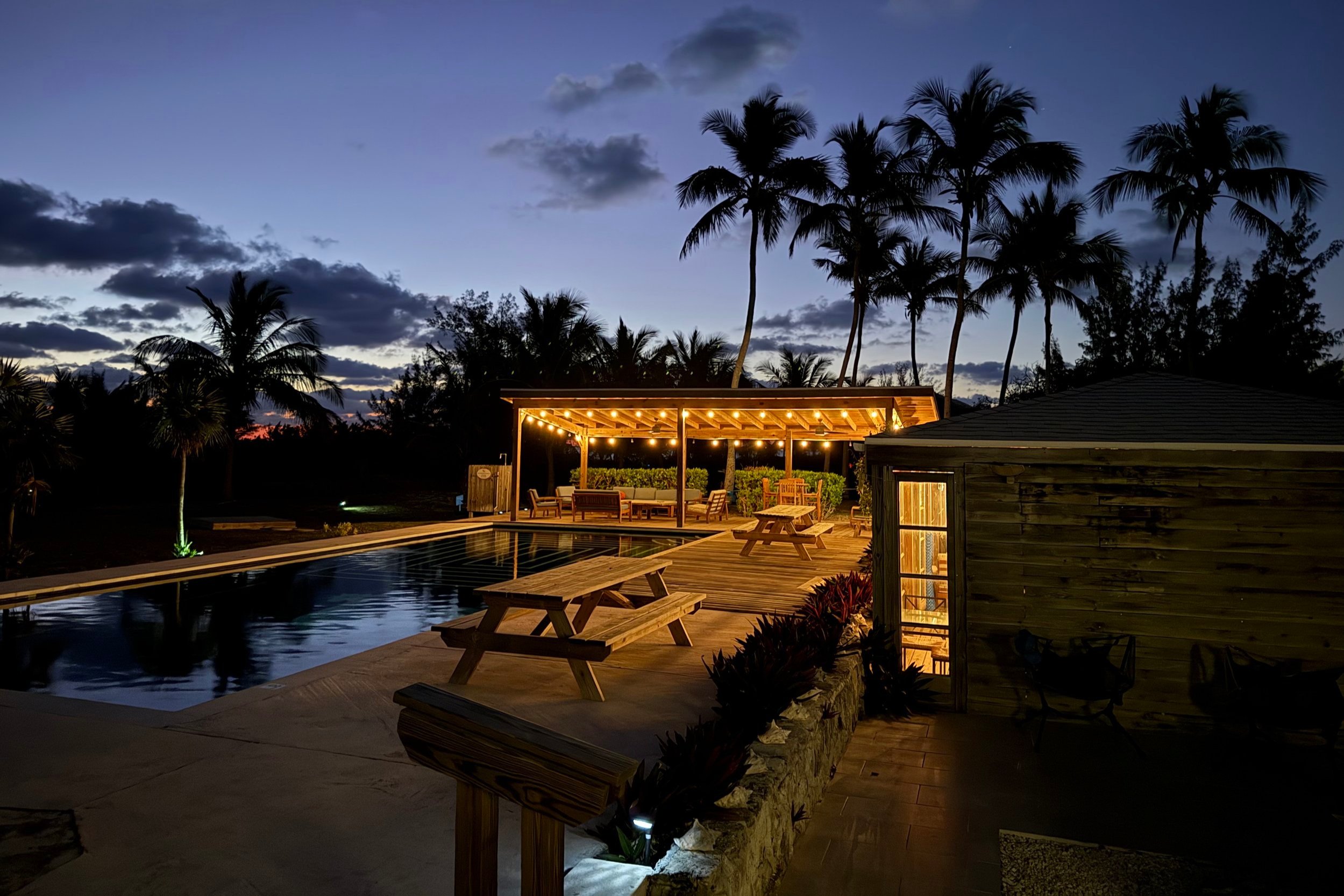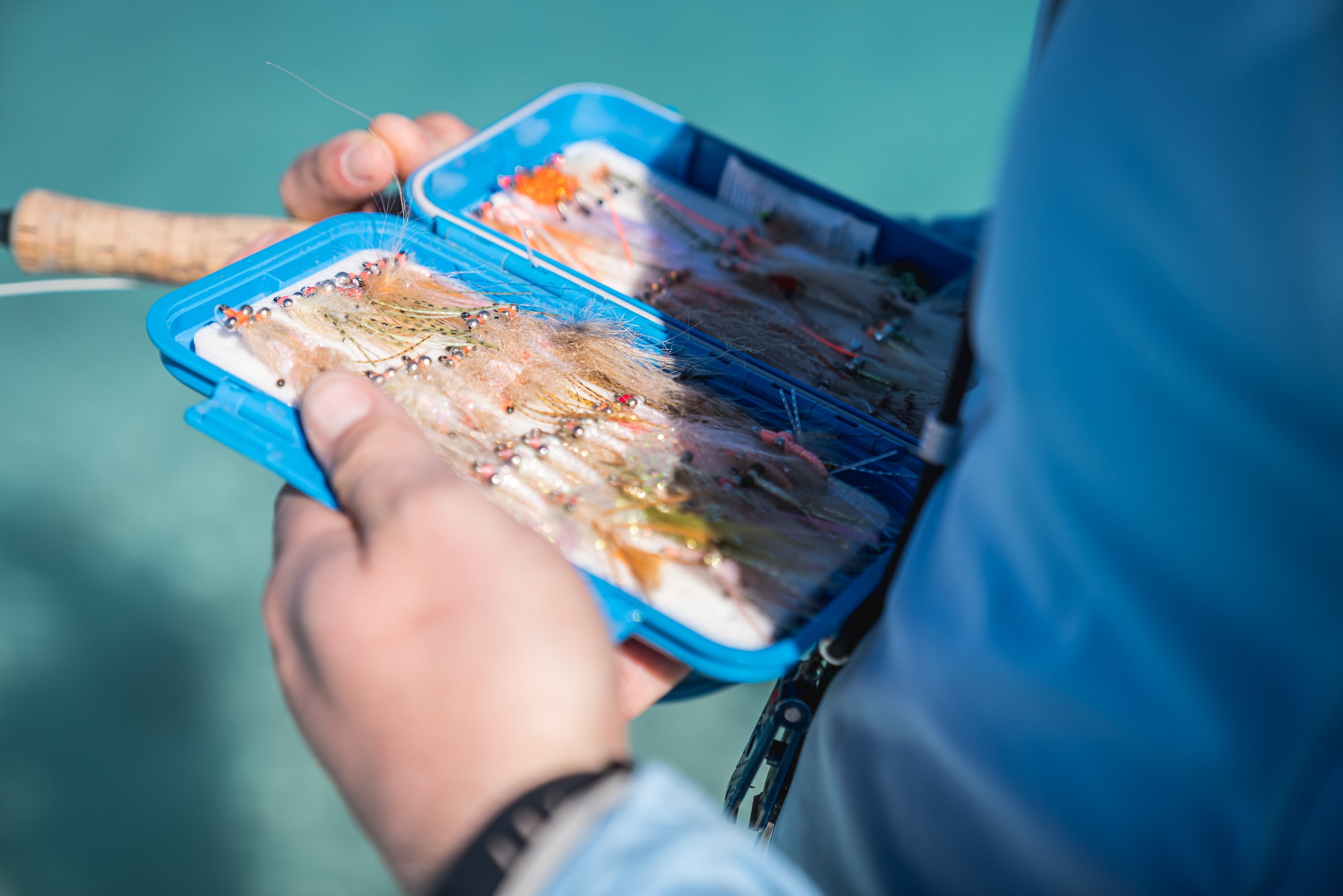Flies for Soul Fly Lodge, pt. II: Bonefish Fly Selection
Intro & Methodology
When preparing for a trip to Soul Fly Lodge, fly selection is as important as every other piece of gear but is, by far, the most complicated and can be the most subjective. We love discussing fly patterns, thinking about what works and why, and suggesting patterns that typically work well, but we are also sensitive to the fact that buying flies back home before the trip can sometimes result in fly selections that aren’t entirely used; this is what we aim to avoid.
We also believe that if our guests can develop a better understanding of our fishery and the fishing situations they will encounter, they will come to appreciate why certain fly patterns are chosen at certain times. Armed with such knowledge, filling a fly box and creating an excellent and effective fly selection will be more intuitive, engaging, and fun than simply fulfilling a checklist.
So to help our guests fill their fly boxes with patterns that are the most likely to be effective upon arrival, we developed a Fly Selection Methodology based on the specific angling scenarios at Soul Fly Lodge. In Flies for Soul Fly Lodge, Part I, we introduced our methodology and now we’ll apply it to bonefish fly selection.
We’ve worked with our friend, angler, and artist Bri Dostie to help us create infographics that depict each scenario and the key information needed to understand the situation and choose flies appropriately.
Before we begin, a short preface on a few elements:
Water Depth:
Water depth is the primary driver of our methodology and for selecting flies for bonefish and permit. The amount of water on a flat determines fish behavior, which in turn dictates how anglers should approach the fish. What follows is an overview of the three water depth ranges that anglers will experience when fishing for bonefish at Soul Fly Lodge – Skinny Water, Shallow Water, and Deep Water – and the related flies for each.
Tailing:
Throughout our fly selection methodology and the following sections are references to ‘tailing’ bonefish. This refers to a bonefish that is actively feeding on the bottom, its head facing downward and tail angled upward, such that the tail has broken the surface of the water and is exposed in the air.
Food, Fly Color & Hook Size:
Bonefish eat everything from clams to snails, shrimp, tiny baitfish, and worms. However, we can most effectively mimic shrimp and worms, so that's what we fish most frequently. In the Berry Islands, we typically fish over white-sand bottom flats and the bonefish we target are foraging for food (as opposed to hunting for food in prey-rich areas), which is unique for the Bahamas. As forage foods typically match their surroundings, we try to match our fly colors to the bottom we are fishing.
Most of the time this means we choose fly colors that fall into a spectrum of white- or light-sand, tan, or mottled-tan. Sometimes, we fish over turtle grass, in which case we choose tans or olive colored flies. As you fill your fly boxes, we recommend a ratio of 6-to-1 between lighter and darker colors (that is, six light flies for every one darker fly).
You’ll see that the Example Flies range from hook sizes 2 to 8, and the flies you bring should be the same. For Skinny Water, all flies should be sized 4 to 8; for Shallow Water and Deep Water scenarios, flies can be sized 2 to 8. When the fishing is especially challenging and technical, we tend toward the smaller flies. In deeper water, we tend to use the flies on the larger side of the size range.
Example Flies:
Accompanying each angling scenario is a list of hyperlinked Example Flies. These are examples of patterns that will work in this angling scenario but by no means are the lists exhaustive. Your local fly shop or favorite custom fly tyer will have comparable patterns that will be just as effective as those listed here, and we encourage you to buy from who you know or who’s nearby.
If you’re inclined to purchase the specific example flies, feel free, but know that many, many other patterns are equally as effective – if not more, depending on the day. So, buy or tie some cool, new patterns to bring with you based on the angling scenarios and example flies below, and we’ll put them to the test!
Scenario I: Skinny Water - Consistent Tailing
Illustrations are the copyright of Soul Fly Lodge and the artist, Bri Dostie.
Water Depth:
We define Skinny Water as water depths from 0 to 12 inches deep, which equates roughly to shin-deep on most anglers.
Fish Behavior:
In Skinny Water, we expect to encounter bonefish tailing consistently, meaning that most of our shots will be at fish that are actively feeding. We anticipate seeing bonefish tails out of the water and nervous water surrounding the fish. Bonefish are seen in varying numbers in Skinny Water - as singles and doubles, as smaller groups up to 20, and all the way up to large schools of 500 fish or more.
Because of the lack of water (which provides cover, protection, and opportunity for get-away from predators), bonefish in Skinny Water are especially wary and spooky. If tailing, they will be largely stationary and if cruising, they will be moving slowly across the flat in search of food and on guard for predatory threats.
Angling Approach:
This is the most challenging and technical of all the angling scenarios for bonefish, and they should be approached as cautiously and carefully as possible. We are almost always fishing on foot in water this deep, wading slowly and as quietly as possible in order to minimize our disturbance and noise, and maximize our stealth. Soul Fly guides may be wading alongside anglers, helping to spot fish and discuss tactics but it’s also possible that guests wade fish on their own while their guide is with their fishing partner, within eyesight, but a short ways away or handling the boat to ensure a smooth transition to the next spot when the time comes.
The ideal lead for fish in Skinny Water varies from 12 to 36 inches, and depends on how fast the fish is moving: slower- or hardly-moving fish should be casted closer to, while fish cruising consistently should be given a long lead. All presentations should be made as delicately as possible. Endeavor to have the fly turnover in the air and fall on its own accord, as opposed to turning the fly over directly into the water in a splash.
Fly Elements:
Flies for Skinny Water scenarios are either unweighted or lightly-weighted with bead chain eyes.
Example Flies:
Scenario II: Shallow Water - Sometimes Tailing
Illustrations are the copyright of Soul Fly Lodge and the artist, Bri Dostie.
Water Depth:
For us, Shallow Water means water depths of 12 to 24 inches, which equates roughly to knee-deep or less on most anglers.
Fish Behavior:
In Shallow Water, bonefish are seen both tailing and cruising. When tailing, the visual will be comparable to that described under Skinny Water, but in this deeper water, the tails we see may appear and disappear as the fish moves and feeds. We will see bonefish cruising in Shallow Water as well – again, as singles and doubles, as small groups up to 20, and all the way up to large schools of 500 fish.
With potentially another foot of water in the Shallow Water scenario range, we expect bonefish to be slightly-less spooky and skittish here, as compared to Skinny Water, although the same stealth and care will apply.
Angling Approach:
In this scenario, anglers are likely fishing from the bow of flats skiffs while our guides are poling, and our angling partner (if any) is sitting or standing between. While poling across the flat, the guide will call out fish they see. It’s important to maintain as much stealth as possible while on the skiff. Be careful moving around the boat, step gingerly, and try to avoid dropping or banging items at all costs.
An appropriate lead in Shallow Water is between 24 and 60 inches depending, again, on the speed at which the bonefish is moving. Slower-moving fish require shorter leads while quicker-moving fish necessitate longer leads. In either scenario, your guide has a wealth of information so inquire about the proper lead length.
Fly Elements:
Shallow Water flies scenarios are weighted with bead chain eyes.
Example Flies:
Scenario III: Deep Water - Rarely Tailing
Illustrations are the copyright of Soul Fly Lodge and the artist, Bri Dostie.
Water Depth:
For bonefishing, the final water depth scenario is referred to as Deep Water. This equates to water depths of 24 to 36 inches, or roughly waist-deep on most anglers.
Fish Behavior:
Once we reach water depths above two feet, it is extremely rare to see bonefish tailing - the water is simply too deep for the average length of bonefish in the Bahamas. Instead, we expect to see fish cruising – as solos, doubles, or small groups. Once we’ve spotted one or some bonefish in Deep Water, we may see them feed by tipping downward, but these fish are primarily cruising. Sometimes you may find large schools sitting in on a deeper part of the flat in a targetable congregation.
In this scenario, the deepest-water situation, bonefish are more comfortable and, therefore, less spooky, but must be approached and casted to cautiously, nonetheless.
Angling Approach:
When fishing in Deep Water, the approach is nearly identical to that in Shallow Water – from the bow of the skiff, with the guide poling the boat from the stern. The key difference in Deep Water scenarios is the required lead of the fly. Because the water is much deeper, leads must be longer – a minimum of 36 inches and sometimes extended up to 5 feet (60 inches). These longer leads allow for the fly to sink to the bottom of the water column in time for the bonefish to approach and see it.
Fish are more challenging to spot in Deep Water as well. For this reason, anglers must be ready for shots to fish at distances short and long. Additionally, when two anglers are sharing a boat, the person who’s not fishing can be tremendously helpful by managing the active angler’s extra fly line while the boat is polled across the flat by the guide. It’s teamwork out there and everyone can be a part of the skiff’s successful day.
Fly Elements:
To compensate for the deeper water in this scenario, lead eyes are used in the fly patterns.
Example Flies:
Conclusion & Upcoming
Ultimately, this blog post and accompanying infographics are intended to help anglers be more successful when fishing at Soul Fly Lodge. We believe that by better conceptualizing the specific bonefishing scenarios encountered and also understanding when and why different types of fly patterns are chosen, our guests will be better prepared when they arrive. Better preparation translates to fly selections filled with appropriate patterns, better presentations and shots made at the fish spotted, and more fish hooked as a result.
Stay tuned, for in the coming weeks, we’ll apply our fly selection methodology to choosing permit flies next. Until then, and as always, reach out with any questions!
All illustrations are the copyright of Soul Fly Lodge and Bri Dostie for the purpose of this blog.
Read more on the Soul Fly Journal:










